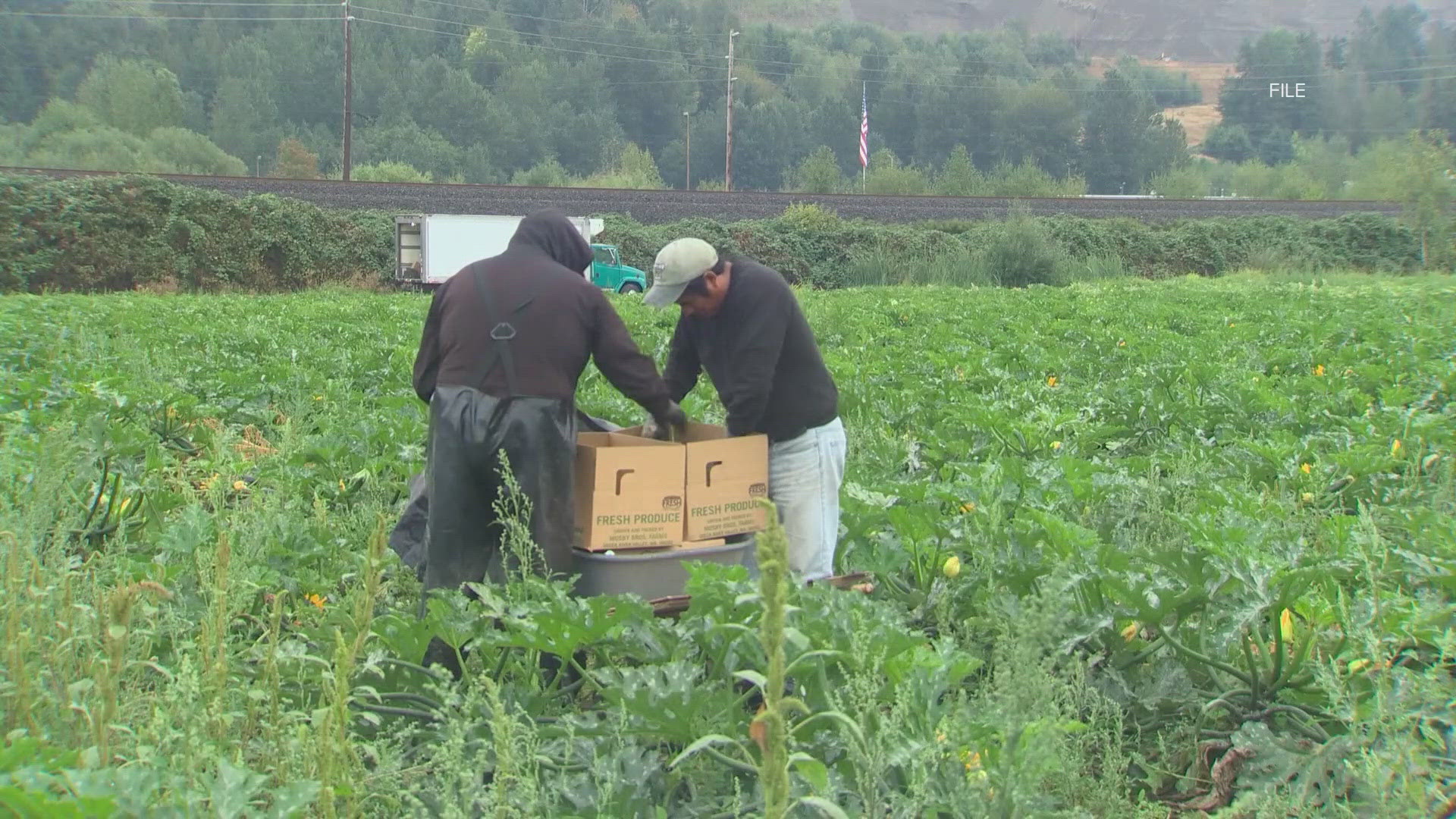LACEY, Wash. — Every day, farms of all sizes are closing in Washington state.
Washington state has 32,076 farms, according to the U.S. Department of Agriculture National Agricultural Statistics Service. The average farm size is 432 acres.
Since the last agriculture census, the Washington State Department of Agriculture (WSDA) said 3,717 farms have closed in the past seven years.
Other agencies and groups tracking this data since then tell KING 5 as many as a dozen farms in the state can close in a single day.
While the total number of farms has decreased, the WSDA reports the overall market value of agriculture – crops and livestock – in Washington has steadily increased contributing $12.8 billion to the state’s economy in 2022 alone.
The closures of farms impact the supply of locally grown produce and livestock to families across the state, as well as the livelihood of farm owners and farm workers.
Some of the contributing factors to farms closing over the years include rising operating costs, set market prices and fluctuating labor force availability.
The non-profit - Washington Farm Labor Association (wafla) – has an upfront view of the changes within the farm working industry.
Wafla connects farms and seasonal employers with workers in the United States and those from outside of the U.S. — via H-2A work visas. The program protects U.S. workers first and foremost, according to wafla CEO Enrique Gastelum.
The number of readily available U.S domestic workers has leveled off, according to Gastelum, who said that's part of the concerns for the future of locally-grown produce and livestock.
"I don't want to be at the shores of Seattle waiting for my food to come on some boat, or from a plane," Gastelum said. "Our industry right now is struggling, you know, not just here in Washington but across the U.S., we're at a very, I think, sensitive tipping point right now."
Gastelum said Washington has some of the highest wage rates that are guaranteed for farm workers. An H-2A worker is paid $19.25 an hour, which is three dollars more than the state minimum wage and just as high as some minimum wages set in various cities in Washington.
Some worker-protection policies, Gastelum said, are putting "concerning pressures" on labor-intensive agriculture because it's a market price business.
According to a news release by wafla on June 17 - more concerns like this are brewing.
Wafla reports a group of labor activists is asking a judge to block all foreign guest workers from farming in Washington state as part of a lawsuit disputing pay rates for farm workers. Gastelum said this could be further devastating to the state's farm industry.
Gastelum and other industry leaders recently attended the Washington State Agriculture Viability Conference.
The focus of the conference was to bring together producers, agricultural businesses, industry experts, and policymakers to discuss the challenges and opportunities facing Washington agriculture.
A WSDA spokesperson told KING 5, "These are challenging times for our farms and ranches in terms of maintaining economic viability. If we are unable to control inflation and high input costs and if our market opportunities for Washington agricultural producers remain flat, the trend toward reductions in the number of farms and farm consolidation will persist."
The WSDA partnered with the Washington State University (WSU) IMPACT Center to conduct an agricultural competitiveness study that highlights ways to invest in the industry to improve our overall competitiveness.
WSDA was awarded $400,000 in pass-through one-time funding during the 2023 legislative session to make this study possible.
"We are committed to supporting our producers through these transitions, ensuring sustainable practices, community resilience and food security, and the overall vitality of our agricultural industry for generations to come," the WSDA spokesperson said.
The WSDA said it hopes to have early findings from this study by late 2024 and into 2025 to better identify ways to prevent more farms from closing across the state.

